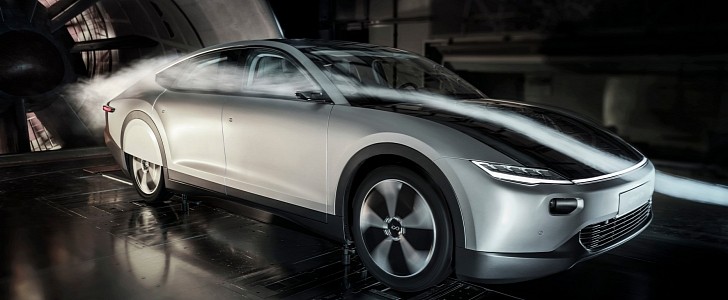We told you that Lightyear commissioned the production of its first car to Valmet Automotive on July 19. When the company starts delivering the Lightyear One, it will be the most energy-efficient family vehicle in the world. However, we still had some doubts about the solar EV and the company, and we got in touch with Lightyear to clarify them. That’s how we learned that it plans to have a mass-production car from 2024 onwards. As you may imagine now, it is not the Lightyear One.
The company created its flagship to demonstrate the technology it champions, and it will have only 946 units. If you are wondering about why Lightyear chose that very specific number, there are two reasons for that.
The first is that one lightyear is equivalent to 9.46 trillion kilometers. The second is that the company has a goal: to drive 9.46 trillion km by 2035 only with solar energy captured by its cars. If you divide that by the 946 Lightyear One units the company plans to build with Valmet, each of them would have to drive 10 billion km. That shows the company plans a much more extensive lineup to insanely expand sales if it really means to meet its solar mileage target.
We tried to imagine how many cars Lightyear would have to sell to reach that impressive number by 2035. According to Odysee-Mure Project, the average distance a car travels every year in Europe is around 12,000 km. Lightyear products will be available from summer 2022, giving the company a little less than 14 years.
If we divide 9.46 trillion km for 168,000 (14 times 12,000), we end up with 56.3 million cars, which means the company would need all of them on the roads right from 2022 to get to 2035 with 9.46 trillion km. It also means these cars would have to be powered solely by solar energy, either extracted by the car’s solar panels or charged from outlets that deliver electricity generated thanks to the sun.
We know that is not so linear and that Lightyear One owners could drive much more than the average every year. Still, the target is pretty much impossible to meet, even if the plans for the electric flagship included producing more than 946 units.
Lightyear told us that the cars Valmet Automotive will start manufacturing in January 2022 would not be prototypes but rather vehicles ready to be shipped to their buyers. Before that, the company plans to have 10 to 20 prototypes for the homologation process. So far, the deal with Valmet Automotive covers only the Lightyear one production.
At this point, we are more curious to see what Lightyear has in mind to reach more customers than its €150,000-EV can. We wouldn’t be surprised with a concept car emerges while we wait for the real deal by 2024.
The first is that one lightyear is equivalent to 9.46 trillion kilometers. The second is that the company has a goal: to drive 9.46 trillion km by 2035 only with solar energy captured by its cars. If you divide that by the 946 Lightyear One units the company plans to build with Valmet, each of them would have to drive 10 billion km. That shows the company plans a much more extensive lineup to insanely expand sales if it really means to meet its solar mileage target.
We tried to imagine how many cars Lightyear would have to sell to reach that impressive number by 2035. According to Odysee-Mure Project, the average distance a car travels every year in Europe is around 12,000 km. Lightyear products will be available from summer 2022, giving the company a little less than 14 years.
If we divide 9.46 trillion km for 168,000 (14 times 12,000), we end up with 56.3 million cars, which means the company would need all of them on the roads right from 2022 to get to 2035 with 9.46 trillion km. It also means these cars would have to be powered solely by solar energy, either extracted by the car’s solar panels or charged from outlets that deliver electricity generated thanks to the sun.
We know that is not so linear and that Lightyear One owners could drive much more than the average every year. Still, the target is pretty much impossible to meet, even if the plans for the electric flagship included producing more than 946 units.
Lightyear told us that the cars Valmet Automotive will start manufacturing in January 2022 would not be prototypes but rather vehicles ready to be shipped to their buyers. Before that, the company plans to have 10 to 20 prototypes for the homologation process. So far, the deal with Valmet Automotive covers only the Lightyear one production.
At this point, we are more curious to see what Lightyear has in mind to reach more customers than its €150,000-EV can. We wouldn’t be surprised with a concept car emerges while we wait for the real deal by 2024.







































